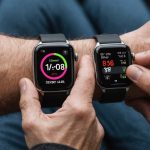Revolutionizing Urgent Care: Are AI-Driven Diagnostics the Key to Speedier Patient Evaluations?
The Evolution of Urgent Care with AI
Urgent care, the backbone of healthcare systems, is undergoing a significant transformation thanks to the integration of artificial intelligence (AI) and machine learning. These technologies are not just enhancing the speed and accuracy of patient evaluations but are also redefining the way healthcare professionals approach medical emergencies.
AI in Medical Diagnostics: Enhancing Accuracy and Speed
AI has become a game-changer in medical diagnostics, particularly in urgent care settings where every second counts. AI-powered tools can analyze medical imaging, patient data, and clinical guidelines at an unprecedented speed and accuracy. For instance, AI algorithms can review CT scans, X-rays, and MRIs much faster than human radiologists, often identifying critical issues such as internal bleeding, fractures, or tumors more accurately[1][2][4].
This might interest you : Do Smartwatches Truly Measure Blood Oxygen Levels for Optimal Health Tracking?
Here are some key ways AI is enhancing diagnostic accuracy and speed:
- Data-Driven Decision-Making: AI systems analyze vast amounts of patient data, medical literature, and clinical guidelines to provide timely and accurate diagnostic insights. This has boosted decision-making accuracy by over 30%, leading to quicker diagnostic processes and more tailored treatment plans[2].
- Precision in Analysis: AI has significantly improved early-stage cancer detection rates, with some studies showing a 40% increase in diagnostic precision. This early detection is crucial for conditions where timely intervention can significantly improve patient outcomes[2].
- Scalability: AI-driven healthcare diagnostics enable healthcare systems to manage higher diagnostic volumes efficiently, reducing patient wait times by up to 30% and making care more accessible and affordable[2].
AI-Driven Diagnostics: Real-World Applications
The application of AI in urgent care is diverse and impactful, transforming various aspects of medical diagnostics and treatment.
In parallel : Unlocking Better Sleep: How Smart Bed Technology Enhances Sleep Quality and Health Tracking
Radiology and Imaging
In radiology, AI algorithms are being used to analyze medical images with remarkable accuracy. For example, AI-powered tools can decrease spine MRI exam durations by 70% without compromising image quality, allowing for faster diagnoses and earlier treatment initiation[2].
| Application Area | Traditional Method | AI-Driven Method | Improvement |
|
|-------------------|
|----------------------------------|
| MRI Analysis Time | Hours | Minutes | 70% reduction in exam duration |
| CT Scan Analysis | Manual review | AI-assisted review | Increased accuracy, faster results|
| X-ray Analysis | Human radiologist | AI-powered algorithms | Reduced false positives and negatives|
Predictive Analytics and Patient Monitoring
AI is not only improving diagnostic accuracy but also enhancing patient monitoring and predictive analytics. AI-powered monitoring systems can continuously track vital signs and alert healthcare providers to any signs of deterioration in real-time. This predictive capability allows for early intervention, reducing the risk of complications such as sepsis[1].
Enhancing Patient Care with Telehealth and AI
Telehealth, combined with AI-driven diagnostics, is expanding access to urgent care, especially in underserved areas.
Telehealth: Bridging the Gap
Telehealth platforms integrated with AI can provide remote consultations, enabling patients to receive immediate medical attention without the need for physical visits. This is particularly beneficial during emergencies or in areas with limited healthcare resources.
- **Remote Monitoring**: AI-powered telehealth allows for real-time monitoring of patients, enabling healthcare providers to intervene early in case of any deterioration.
- **Access to Specialized Care**: Telehealth connects patients with specialized care that might not be available locally, ensuring that patients receive the best possible care regardless of their location[1][3][5].
The Role of Machine Learning in Clinical Decision Making
Machine learning algorithms are at the heart of AI-driven diagnostics, enabling healthcare professionals to make informed decisions quickly.
Learning Algorithms and Clinical Decision Support
Machine learning algorithms can sift through vast amounts of medical literature, patient histories, and clinical guidelines to recommend the best course of action. This allows physicians to act swiftly with evidence-based confidence, particularly in complex cases where there may not be a clear solution[1][3].
Here are some popular machine learning algorithms used in healthcare:
- Decision Trees: Useful for differential diagnosis, identifying risk factors for diseases, and finding co-occurrences.
- Deep Learning: Effective in analyzing medical imaging and predicting patient outcomes.
- Random Forests: Good for handling large datasets and predicting patient demand for healthcare services[5].
Overcoming Challenges and Ensuring Ethical Use
While AI-driven diagnostics hold immense potential, there are challenges and ethical considerations that need to be addressed.
Addressing Algorithmic Bias and Data Privacy
Ensuring that AI algorithms are free from bias and that patient data is protected is crucial. Healthcare organizations must implement robust data privacy measures and continuously monitor AI systems for any signs of bias[5].
- **Data Privacy**: Ensuring that patient data is encrypted and protected from unauthorized access.
- **Algorithmic Bias**: Regularly auditing AI algorithms to detect and mitigate any biases.
- **Clinician Buy-In**: Ensuring that healthcare professionals are comfortable using AI tools and understand their limitations[4][5].
Future Potential and Development
The future of urgent care looks promising with the continued development and integration of AI-driven diagnostics.
New Developments and Innovations
Researchers and healthcare organizations are continuously working on new AI technologies that can further enhance patient care. For example, generative AI like ChatGPT is being explored for its potential to transform healthcare education, research, and clinical practice[3].
- **Generative AI**: Potential to generate clinical notes, documentation, and personalized patient communication.
- **Predictive Analytics**: Improving patient outcomes by predicting demand for healthcare services and optimizing resource allocation[3][5].
Practical Insights and Actionable Advice
For healthcare providers looking to integrate AI-driven diagnostics into their practice, here are some practical insights and actionable advice:
- Start Small: Begin with pilot projects to test the efficacy of AI tools in your specific clinical setting.
- Collaborate with Experts: Work with data scientists and AI experts to ensure that the AI systems are tailored to your needs.
- Continuously Monitor: Regularly monitor AI systems for performance, accuracy, and any signs of bias.
- Train Staff: Ensure that healthcare professionals are trained to use AI tools effectively and understand their limitations[4].
AI-driven diagnostics are revolutionizing urgent care by enhancing the speed, accuracy, and accessibility of patient evaluations. As these technologies continue to evolve, they promise a future where healthcare is more efficient, equitable, and patient-centered.
"AI-powered tools in radiology are game-changers—cutting MRI analysis time by 30% and slashing report processing by half. It means patients get results faster, so treatments can kick off sooner."
— Victor K., Data Engineer at TATEEDA[2]
In the words of Dr. Ravi B Parikh, “This technology may be useful in that it generates text to communicate with a patient or an automated, personalized response. It offers the possibility of lowering workload for doctors, nurse practitioners, and healthcare workers in a more robust way, allowing physicians to spend more time with their patients”[3].
As we move forward, it is clear that AI-driven diagnostics will play a pivotal role in shaping the future of urgent care, making healthcare more accessible, efficient, and effective for all patients.










